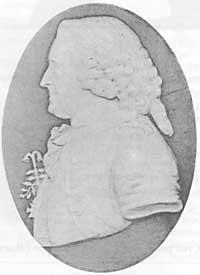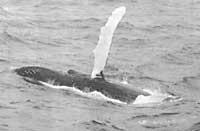Carolus Linnaeus
Elhuyar Fundazioa

This Swedish botanist, born in Rashult on 23 May 1707, was called Carl von Linné, but the Latinized title is best known among scientists.
His father was a Protestant pastor and had a small botanical garden. Young Linnaeus spent many hours there and therefore called small botanists.
He studied medicine at the University of Uppsala, where he took care of gardeners and plant pistils. He thought that plants could be classified into a new and better system based on the reproductive device.
In 1730 he was appointed professor of botany at the University of Uppsala and in 1732 he went to Lapland under the protection of the Swedish Academy of Sciences. He traveled 7,400 kilometers north of Scandinavia, where he discovered a hundred new plant species. He also studied native animals and for his importance for sex he first used the symbols M (male) and V (female).
He also travelled to Western Europe and England and in 1735 published the book Systema Naturae. In this book the living beings appear systematically classified and thanks to it is considered today the father of the modern taxonomy Linnaeus.
He used a two-word nomenclature with two names for each plant or animal: Quercus robur or Salamandra luschani, for example. The first name indicates the genus of the plant or animal and the second indicates the species to which it belongs. The book of Linnaeus had seven large sheets when it was first published, but in the tenth edition it was extended to 2,500.

In 1737 Linnaeus published two other books: Flora Lapponica and Genera Plantarun. When in 1753 he published his book Species Plantarum, he became famous all over the world. Today this book remains the basis for systematic classification of flowering and fern plants.
In 1755 the king of Spain offered him an offer to go to work, but Linnaeus responded negatively and continued to teach Natural History at the University of Sweden. He was a very good teacher and sent his students all over the world to look for new ways of life.
In 1757 he received the title of nobility and used the name of Carl von Linné. He died in Uppsala on January 10 in 1778. Then sir J. R. British millionaire Smith took them to London by buying their manuscripts and collections of herbs, insects and shells, and are currently at the headquarters of the Linnaean Society. They say that when the king of Sweden discovered that the things of Linnaeus were going to England by boat, he sent a frigate and a dramatic story has been invented around it. But it is not true.
Linnaeus' passion for classification was almost a disease. In addition to producing lists of species and their genera, he classified genera into classes and classes in order.

Despite being religious Linnaeus, the man dared to classify him as Homo Sapiens in the same genus of the orangutan ( Homo Troglodytes). It also got into the genus of whale mammals and similar animals.
Classification as a tree of large groups to small groups and species has contributed significantly to the study of evolution from the original forms of living beings to the present complex forms.
Linnaeus, however, did not accept at all the idea of evolution. In his opinion, when he was born no new species appeared and then none disappeared.
Cuvier, Jussieu and Candolle developed the classification system of Linnaeus, a path that made the emergence of a Darwin and the theory of sharp evolution indispensable.





